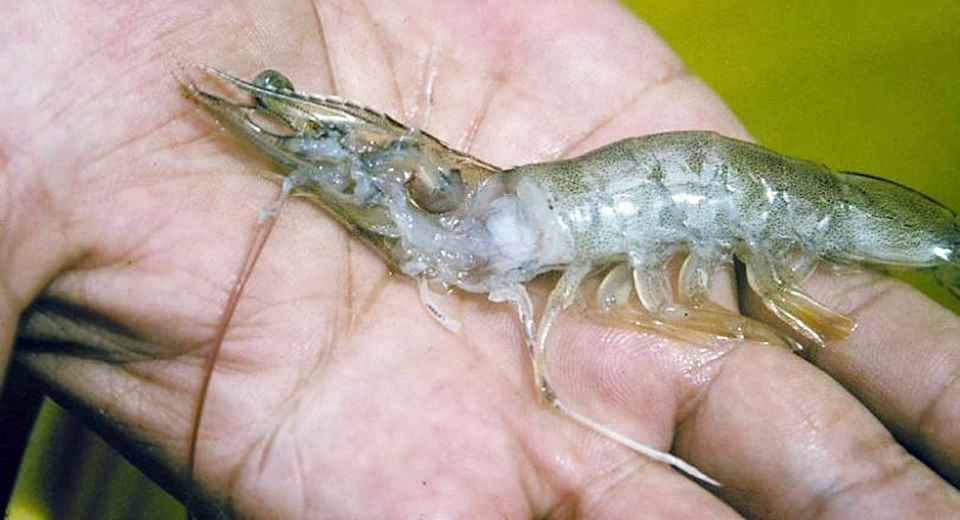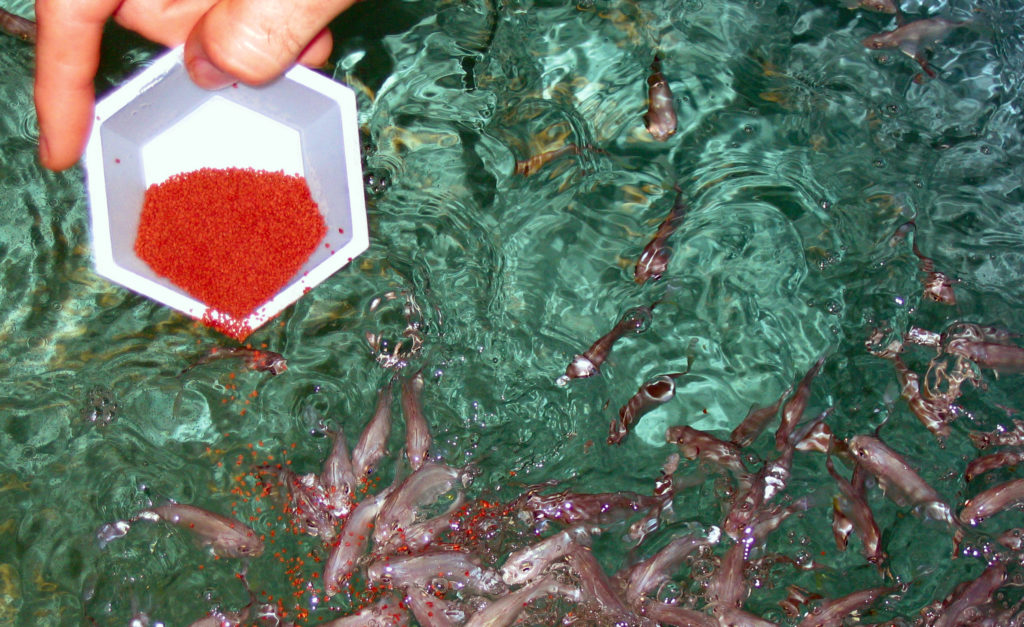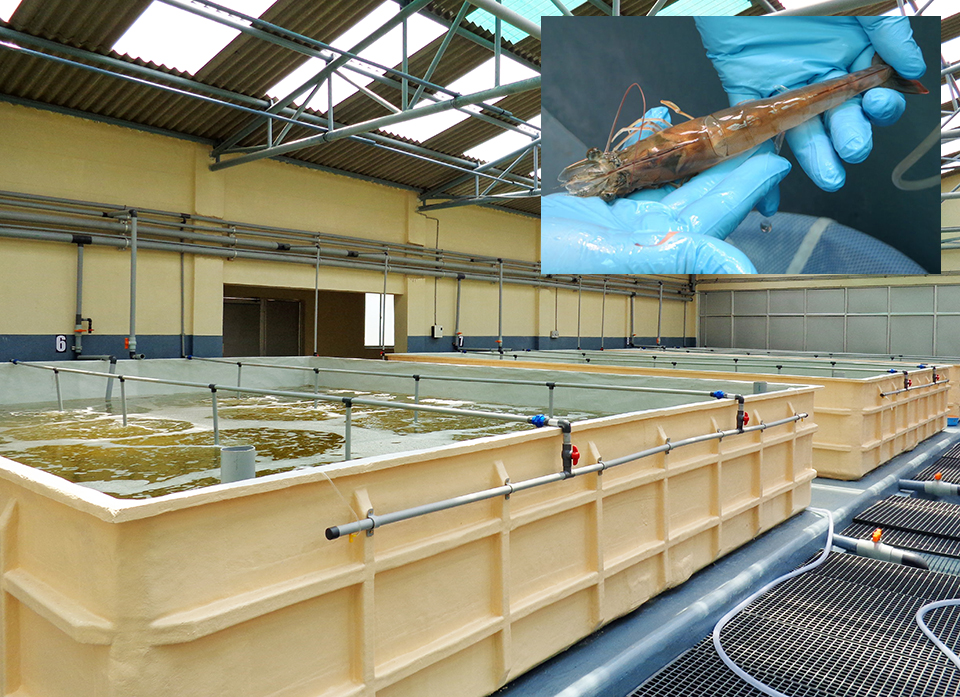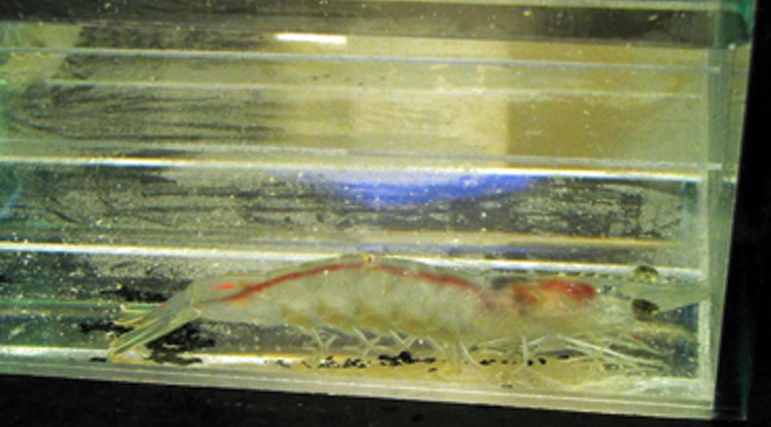NHP reported throughout the Americas

Necrotizing hepatopancreatitis (NHP), caused by an alpha-Proteobacteria, has become one of the most important bacterial diseases affecting shrimp farming in the Americas. In contrast to vibriosis and other bacterial diseases of shrimp, little is known about the biology and ecology of NHP and its agent. It remains a mystery where this agent resides in shrimp-farming systems, thereby making NHP a very difficult disease to prevent.
NHP’s recurrent and seasonal appearances in shrimp farms hint to the possible implication of reservoir hosts. Early detection of the NHP agent and antibiotic treatment remain the only measures of control.
Detection and diagnosis
Traditionally, gross observations of affected shrimp have been useful for making a tentative diagnosis of NHP, but since similar signs can also be caused by other diseases such as vibriosis, the technique is not considered specific or reliable. Microscopic examination of wet mounts prepared with freshly dissected hepatopancreas is also useful, but this procedure has the same limitations as gross observations.
During the acute phase of the disease, NHP causes very distinctive lesions that are readily identified by conventional hematoxylin and eosin histology. However, the chronic phase of the disease is not as easily recognized, and other methods need to be used for confirmation.
DNA gene probes specific to the detection of NHP have proven useful for in situ hybridization in cases where confirmatory diagnosis is needed for very low levels of infection or during the chronic phase of the disease. Polymerase chain reaction methods have also been developed that have the advantage of not only being highly sensitive and specific, but also allowing nonlethal screening of valuable broodstock by the examination of fecal samples.
Lastly, monoclonal antibodies for the detection of NHP have been also developed at the University of Arizona in Tucson, Arizona, USA. They are now under characterization and optimization, and in the near future will probably be available in kit form for use at shrimp farms and hatcheries.
Geographic and host distribution
First documented in 1985 as a distinct disease in shrimp farms in Texas, USA, NHP has now been reported in at least 12 countries in the Americas: Belize, Brazil, Costa Rica, Ecuador, Guatemala, Honduras, Mexico, Nicaragua, Panama, Peru, U.S.A. and Venezuela. Recently, NHP was also detected in captive populations of Litopenaeus vannamei in Eritrea.
So far, the reported species of penaeid shrimp affected by NHP continue to include only American species: L. vannamei, Farfantepenaeus aztecus, L. setiferus, L. stylirostris and Fa. californiensis. However, experimental infections under laboratory conditions indicate that Penaeus monodon and Fenneropenaeus chinensis also may be susceptible.
Careless importations of Pacific white shrimp, L. vannamei, into China, Taiwan, and other countries of the Eastern Hemisphere have already resulted in the introduction of Taura Syndrome Virus into those regions. If uncontrolled importations continue, there is a risk that NHP may be introduced, as well, with an uncertain effect on the local P. monodon and Fe. chinensis species.
More research needed
One of the obstacles to better understanding of NHP is the lack of a method/system to multiply and study the bacteria in vitro. Such a system would be useful for studying the life cycle of the NHP agent, and consistently producing bacteria for infectivity studies and testing of treatment and control strategies.
Identification of the agents that serve as reservoirs or vectors of the disease would allow the design of better control strategies at shrimp farms. Also, more research is needed on the mechanisms of transmission of the disease from shrimp to shrimp, both under maturation at hatcheries and in grow-out conditions.
(Editor’s Note: This article was originally published in the August 2003 print edition of the Global Aquaculture Advocate.)
Now that you've reached the end of the article ...
… please consider supporting GSA’s mission to advance responsible seafood practices through education, advocacy and third-party assurances. The Advocate aims to document the evolution of responsible seafood practices and share the expansive knowledge of our vast network of contributors.
By becoming a Global Seafood Alliance member, you’re ensuring that all of the pre-competitive work we do through member benefits, resources and events can continue. Individual membership costs just $50 a year.
Not a GSA member? Join us.
Authors
-
Carlos R. Pantoja, Ph.D.
University of Arizona
Aquaculture Pathology Laboratory
1117 East Lowell Street
Building 90, Room 106
Tucson, Arizona 85721 USA[117,100,101,46,97,110,111,122,105,114,97,46,117,64,97,106,111,116,110,97,112,99]
-

Donald V. Lightner, Ph.D.
University of Arizona
Aquaculture Pathology Laboratory
1117 East Lowell Street
Building 90, Room 106
Tucson, Arizona 85721 USA
Tagged With
Related Posts

Health & Welfare
Antibiotics in aquaculture: Is responsible use possible?
Regulations on antibiotics in aquaculture vary by country and region, from outright bans to minimal oversight.

Health & Welfare
Brazil shrimp farm performs genetic selection for IMNV resistance, growth
The Queiroz Galvão Alimentos shrimp farm and hatchery in Brazil have been working with Concepto Azul to implement a disease-prevention and genetic-breeding program that addresses ongoing impacts from infectious myonecrosis virus (IMNV) and other pathogens.

Health & Welfare
Broodstock center in India supports domestic shrimp-farming industry
The project produces specific-pathogen-free broodstock with good reproductive performance, fast growth and high survival. More than 60 hatcheries in India have received broodstock from the program.

Health & Welfare
Colombian shrimp research associates TSV, NHP selection, resistance
In an NHP (necrotizing hepatopancreatitis) challenge test, shrimp from a Colombian breeding program had higher resistance and 30 percent greater survival than a control line of Taura syndrome virus-free shrimp.


